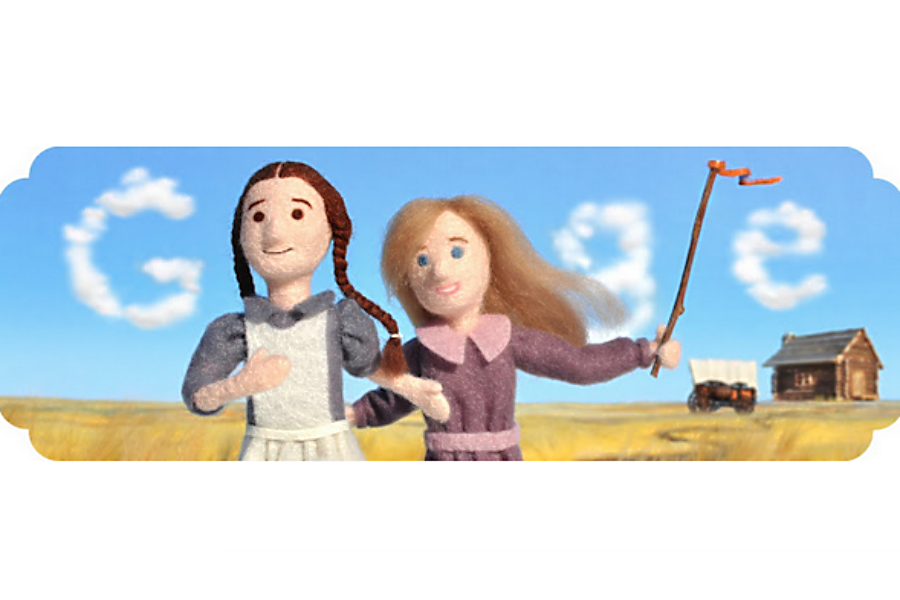Laura Ingalls Wilder: A Google Doodle of good yarn
Loading...
The 148th birthday of Laura Ingalls Wilder - the author of "Little House on the Prairie" - was celebrated by Google with figures made of wool.
And here's the yarn behind this Google Doodle – and it's a Doodle of a yarn.
Jack and Holman Wang were tapped to be the "guest artists" for this Laura Ingalls Wilder homage (Actually, they were invited more than a year ago, but were upstaged by the start of the Sochi Olympics on Feb. 7, 2014).
In their blog, the Wang twins describe their inspiration.
As children of the 70s and early 80s, we have fond memories of the Little House on the Prairie television show, which always seemed to be on (though for our young brains, the Mary-going-blind storyline was perhaps a little traumatizing!). Our Doodle, which shows Laura (brunette) and Mary (blond) running through the prairies, is loosely inspired by opening credits of the TV show, which depicts the Ingalls girls running down a hill.
The Wang brothers are from Canada. Jack Wang is a writer and associate professor in the Department of Writing at Ithaca College in Ithaca, New York. His bio says that he's currently serving as the David. T.K. Wong Creative Writing Fellow at the University of East Anglia in Norwich, England.
Holman Wang says that he "downshifted" his life from corporate lawyer to children’s author and illustrator. Since late 2012, he's worked "full-time as a children’s author and illustrator with, ironically, a toolkit of entirely self-taught skills in needle-felting, model making and photography."
It's the last bit - the needle felting - that apparently caught the attention of Google.
The brothers describe the process for creating Laura and Mary out of wool felt on the Google Doodle blog.
Needle felting is basically sculpting with wool, and the process is labor-intensive. It requires stabbing loose wool (called “roving”) hundreds, even thousands of times with a barbed needle, which entangles the fibres and makes the wool firm enough to hold shape. Our felt figures are built around a wire armature that makes the figures easy to pose and re-pose.
After their little felt stars were created, the illustrators built a faux prairie backdrop.
Because we didn’t have a prairie landscape at hand in Vancouver, Canada for location shooting, we had to create our own artificial landscape by needling loose wool onto a sculpted styrofoam block. Craft grass was glued to the front of the set to help add a sense of depth.
And then Jack built the requisite log cabin out of sticks.
The scene was set up outside in January and photographed. The Google clouds were digitally added later.
If you're a fan of this unusual hand-crafted illustration, there's more coming.
The Wang brothers have a new series of felt illustrated books, "Star Wars Epic Yarns," due to be released on March 31, 2015. Each book contains twelve iconic scenes from the Star Wars movie franchise. "Jedi apprentices and little princesses will delight in this (heart)felt retelling of the Star Wars saga," according to the Wang brothers.








